 Columbine
Columbine
Aquilegia canadensis
Columbine is easy to grow and tolerates a wide range of conditions. Red and yellow 1"-2" lantern-shaped flowers are hummingbird magnets. Under favorable conditions Columbine spreads readily. Larval host plant for a cute little butterfly, the Columbine Duskywing. Grown from Kentucky-source seed.
Light: prefers Part Sun
Soil: Moist to Average
Height: 1-2 feet
Blooms: April-June
Flowers: Red with Yellow center

 Swamp Milkweed
Swamp Milkweed
Asclepias incarnata
When looking for a milkweed plant for the home garden, Swamp Milkweed is usually the best fit. It is not stocky nor does it spread vigorously by rhizomes. The milkweeds are one of the best nectar plants to attract pollinators, especially the monarchs which rely on milkweed foliage in the caterpillar stage.
Light: Full Sun
Soil: Moist to Average
Height: to 4 feet
Blooms: June-August
Flowers: Pink

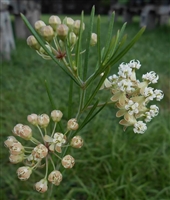 Whorled Milkweed
Whorled Milkweed
Asclepias verticillata
Dainty in appearance with "whorls" of thin leaves and elegant clusters of white flowers. This plant is ideal for that tough spot in dry soil and full sun. Spreads by rhizomes. Larval host to the Monarch butterfly. Grown from Kentucky-source seed.
Light: Full Sun
Soil: Dry
Height: 2 feet
Blooms: July-September
Flowers: White

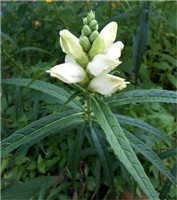 White Turtlehead
White Turtlehead
Chelone glabra
Well sought-after host plant for the Baltimore Checkerspot Butterfly. Blooms are white, sometimes tinged with pink. Perfect plant for a damp spot with intermittent light. Grown from Kentucky-source seed.
Light: Part Sun
Soil: Moist
Height: 2'-4 feet
Blooms: August-October
Flower: White, White & Pink

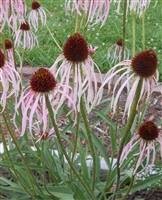 Pale Purple Coneflower
Pale Purple Coneflower
Echinacea pallida simulata
Also known as Glade Coneflower, this plant is elegant with thin reclining petals. It is under-utilized in the home garden and as a cut flower. Attracts bee and butterflies & provides seed for birds if flowering heads remain through winter. Larval host plant for the Silvery Checkerspot butterfly and Wavy-lined Emerald moth. Grown from Kentucky-source seed.
Light: Full Sun
Soil: Average to Dry
Height: to 3 feet
Blooms: June-July
Flowers: Pale Purple to Purple

 Purple Coneflower
Purple Coneflower
Echinacea purpurea
A popular plant for good reason. Blooms attract pollinators in summer and their seed feeds birds in the cold months. Beautiful in a home or business planting and in a vase. One larval host plant for the Silvery Checkerspot butterfly and Wavy-lined Emerald moth. Grown from Kentucky-source seed.
Light: Full Sun
Soil: Average
Height: 1 to 3 feet
Blooms: June-August
Flowers: Purple-Magenta

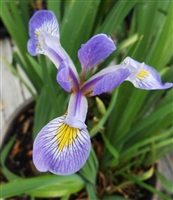 Southern Blue Flag Iris
Southern Blue Flag Iris
Iris virginica
Plant with sword-like leaves and large blue-violet flowers (1-3 cm across) is also well-rooted to help prevent erosion in low areas. Best grown in consistently moist organic soils. Good candidate for a rain garden.
Light: Full Sun
Soil: Moist-Wet
Height: 1 to 3 feet
Blooms: June
Flowers: Blue-Violet with Yellow

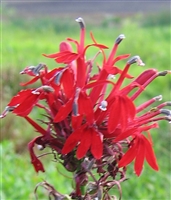 Cardinal Flower
Cardinal Flower
Lobelia cardinalis
Truly stunning carmine flowers borne on tall slender spikes which rise from a basal rosette of leaves. Ideal for use in hummingbird and rain gardens. Grown from Kentucky-source seed.
Light: Full Sun
Soil: Moist-Wet
Height: 2 to 4 feet
Blooms: July-September
Flowers: Red

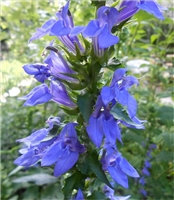 Great Blue Lobelia
Great Blue Lobelia
Lobelia siphilitica
Spikes of tubular blue-violet flowers attract and support bumblebees. This plant works well in a rain garden, along a waterway or at the edge of a pond. Grown from Kentucky-source seed.
Light: Full Sun to Part Shade
Soil: Moist to Wet
Height: 2 to 4 feet
Blooms: July-September
Flowers: Blue-violet

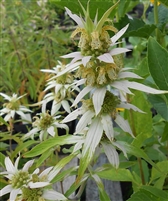 Spotted Beebalm
Spotted Beebalm
Monarda punctata
Showy pagoda-like white to deep pink bracts form a ring below less conspicuous spotted yellow flowers. Low maintenance, long-lasting bloom period, though a 'weak perennial' but may self-seed. A pollinator favorite.
Light: Part to Full Sun
Soil: Average to Dry
Height: 1 to 3 feet
Blooms: July-September
Flowers: Yellow, White-Pink Bracts

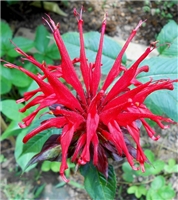 Scarlet Beebalm
Scarlet Beebalm
Monarda didyma
Brilliant red flowers are a hit with hummingbirds. Foliage emits spicy odor when crushed. Striking as a cut flower. Not native to Kentucky but to neighboring states, both Ohio and Tennesse.
Light: Full Sun to Part Shade
Soil: Average to Wet
Height: 2 to 4 feet
Blooms: July-August
Flowers: Red

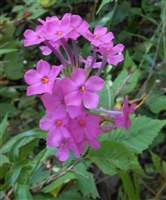 Garden Phlox
Garden Phlox
Phlox paniculata
True to it's name, Garden Phlox does well in the home garden and in rain gardens. Best planted in full sun. It is an excellent source of nectar for hummingbirds.
Light: Full Sun to Part Shade
Soil: Average
Height: 2 to 4 feet
Blooms: July-September
Flowers: Pink-Purple

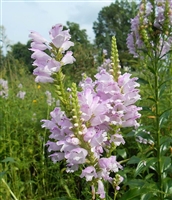 Obedient Plant
Obedient Plant
Physostegia virginiana
White to pink tubular flowers fill the flowering stalk attracting bees, butterflies and hummingbirds. Makes a lasting cut flower. Spreads readily. Consider using in contained situation for home garden use.
Light: Full Sun to Part Shade
Soil: Average
Height: 3 to 4 feet
Blooms: August-October
Flowers: White to Pink

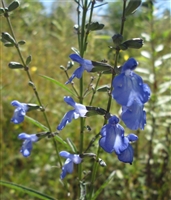 Blue Sage
Blue Sage
Salvia azurea
Pairs of true blue flowers arranged on thin flowering stalks catch the eye even from a distance. Foliage is nicely aromatic when crushed. May be trimmed back in late spring to desired height and shape. Attracts bees and butterflies & is deer resistant.
Light: Full Sun
Soil: Average to Dry
Height: 3 to 5 feet
Blooms: July-October
Flowers: Blue

 Downy Skullcap
Downy Skullcap
Scutellaria incana
Blue flowers are conspicuous and attractive, gorgeous in masses. Primarily pollinated by bumblebees. Grown from Kentucky-source seed.
Light: Full Sun to Part Shade
Soil: Average to Dry
Height: 2 to 3 feet
Blooms: July-September
Flowers: Blue

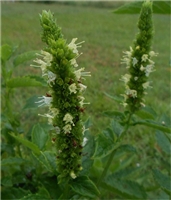 Yellow Giant Hyssop
Yellow Giant Hyssop
Agastache nepetoides
A 'one-stop-shop' for bees and butterflies with many flowers in dense terminal spikes. Deer resistant. Grown from Kentucky-source seed.
Light: Full Sun to Part Shade
Soil: Average
Height: to 6 feet
Blooms: July-September
Flowers: Yellow-Green

 Culver's Root
Culver's Root
Veronicastrum virginicum
Tall wispy, white candelabra-like flowers attract a multitude of pollinators and produce an especially strong effect when a number are planted together in a group. Candidate for rain gardens.
Light: Full Sun
Soil: Average to Wet
Height: 4 to 7 feet
Blooms: May-August
Flowers: White

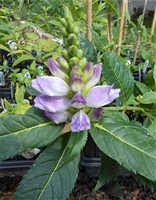 Rose Turtlehead
Rose Turtlehead
Chelone obliqua
Attractive especially when planted in groups. Best planted in intermediate light with moist well-drained soil such as in a rain garden.
Light: Intermediate
Soil: Average to Wet
Height: 2 to 3 feet
Blooms: July-August
Flowers: Pink

 Giant Ironweed
Giant Ironweed
Vernonia gigantea
Try Ironweed in a bouquet with Mist Flower, just beautiful. Highly attractive to butterflies. Deer resistant. Grown from Kentucky-source seed.
Light: Full Sun to Part Shade
Soil: Average to Wet
Height: 5 to 8 feet
Blooms: August-September
Flowers: Purple-Magenta

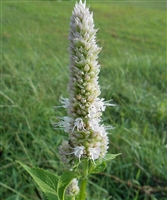 Purple Giant Hyssop
Purple Giant Hyssop
Agastache scrophulariifolia
With spikes from 1" to 6" long, this plant makes an excellent source of late-season nectar indeed. Crushed foliage emits a pleasant licorice fragrance.
Light: Full Sun to Part Shade
Soil: Average
Height: 2 to 5 feet
Blooms: July-October
Flowers: Pale Purple-Lavender

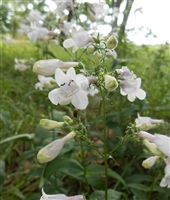 Foxglove Beardtongue
Foxglove Beardtongue
Penstemon digitalis
Perfect for a sunny border, the tubular flowers are white or tinged with pink and attract a variety of native bees & hummingbirds. Foliage is a smooth, glossy dark green.
Light: Full Sun to Part Shade
Soil: Average to Dry
Height: 3-5 feet
Blooms: April-June
Flowers: white to pink

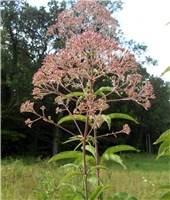 Joe Pye Weed
Joe Pye Weed
Eupatorium fistulosum, Eutrochium fistulosum
Billowy clusters of pinkish-purple flowers are lovely en mass, especially in a damp area. Height can be controlled by trimming by up to 1/2 in June. Excellent for attracting butterflies, as a cut flower and dried. Grown from Kentucky-source seed.
Light: Full Sun to Part Shade
Soil: Average to Wet
Height to 7 feet
Blooms July to September
Flowers: Pinkish-Purple

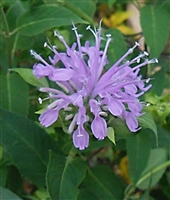 Wild Bergamot
Wild Bergamot
Monarda fistulosa
Also known as Bee Balm, this is a wonderful plant for a pollinator garden. It attracts hummingbirds and butterflies and has a long bloom period.
Light: Full Sun to Part Shade
Soil: Average to Dry
Height: 2 to 4 feet
Blooms July-September
Flowers: Pink-Lavender

 Trumpet Vine
Trumpet Vine
Campsis radicans
Strong, fast-growing woody vine bearing trumpet shaped orange to red 3" long flowers. Attracts and supports hummingbirds and ideal for creating a tall, densely covered privacy trellis. Grown from Kentucky-source seed.
Light: Full Sun to Part Shade
Soil: Average to Dry
Height: to 40 feet
Blooms: July
Flowers Red & Orange

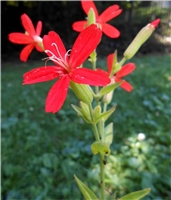 Royal Catchfly
Royal Catchfly
Silene regia
Excellent hummingbird plant with red flowers to 2" across. Makes a lovely addition to a pollinator garden.
Light: Full Sun to Part Shade
Soil: Average, well-drained to Dry
Height: to 4 feet
Blooms: July to August
Flowers: Red

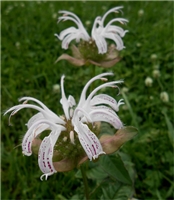 Eastern Bergamot
Eastern Bergamot
Monarda bradburiana
Excellent choice for a yard, this Bee Balm is clump-forming & short (1' to 2'). It is also less aggressive & more mildew-resistant than other Bee Balms. It has a long bloom period and is a great pollinator plant.
Light: Best in Intermediate Light
Soil: Average
Height: 1 to 2 feet
Blooms: May to June
Flowers: Light Pink

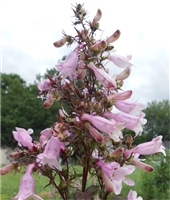 Calico Beardtongue
Calico Beardtongue
Penstemon calycosus
Under-used & well-suited for home garden use, Calico Beardtongue has 1" long pink tubular flowers that attract hummingbirds. Foliage is semi-glossy and may turn purple in fall. Grown from Kentucky-source seed.
Light: Full Sun to Filtered Shade
Soil: Moist to Dry
Height: 1 to 3 feet
Blooms: June to July
Flowers: Violet to Pink

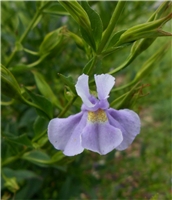 Allegheny Monkey Flower
Allegheny Monkey Flower
Mimulus ringens
Best used for bordering ponds and waterways, for erosion control & to support pollinators. Flowers resemble snapdragons. Rhizomatous perennial. Grown from Kentucky-source seed.
Light: Full Sun to Part Shade
Soil: Average to Wet
Height: 1 to 3 feet
Blooms: June to September
Flowers: Pink to Purple

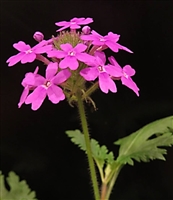 Rose Vervain
Rose Vervain
Verbena canadensis
Attractive low mounding short-lived perennial with an extended bloom period. Good for ground cover, hanging baskets, window boxes, rock gardens & in pots. Attracts hummingbirds.
Light: Full Sun
Soil: Average to Dry
Height: to 1.5 feet
Blooms: May to August
Flowers: Pink to Purple

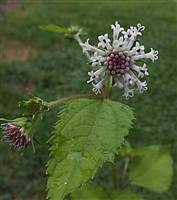 Snow Squarestem
Snow Squarestem
Melanthera nivea
Enjoy flocking butterflies from mid-August through late September by planting Snow Squarestem within view. Snow Squarestem treats pollinators with copious amounts of nectar. Although it has a square stem, it is a member of the Aster Family. Pruning it back periodically to 2-3 feet is recommended to encourage a full, rounded shape. In nature it occurs in edge habitat, flood plains, & disturbed openings. Grown from Kentucky-source seed.
Light: Full Sun
Soil: Average
Height: 1 to 5 feet
Blooms: early June to late September
Flowers: White with Black anthers
